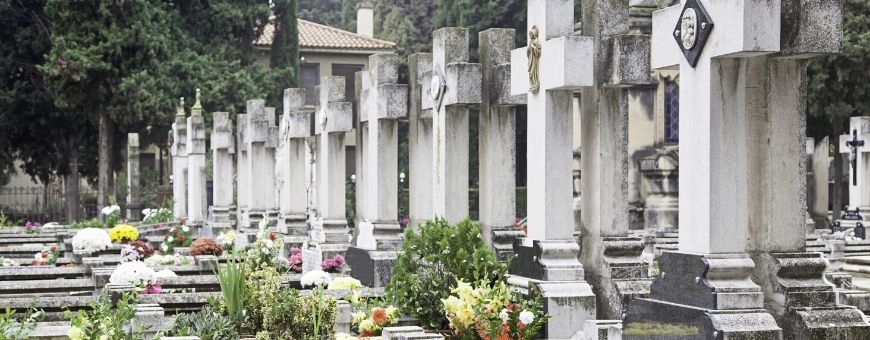Welcome to Matrix Education
To ensure we are showing you the most relevant content, please select your location below.
Select a year to see courses
Learn online or on-campus during the term or school holidays
Learn online or on-campus during the term or school holidays
Learn online or on-campus during the term or school holidays
Learn online or on-campus during the term or school holidays
Learn online or on-campus during the term or school holidays
Learn online or on-campus during the term or school holidays
Learn online or on-campus during the term or school holidays
Get HSC Trial exam ready in just a week
Get HSC exam ready in just a week
Select a year to see available courses
Science guides to help you get ahead
Science guides to help you get ahead
Do you or your child struggle with poetry? In this article, we discuss the 7 poetic forms Year 8 student must know and their key features and conventions.

Join 75,893 students who already have a head start.
"*" indicates required fields
Related courses

Join 8000+ students each term who already have a head start on their school academic journey.
Does your child struggle with poetry? Don’t worry, many students find poetry difficult. To help you out, in this article we’ll discuss the 5 poetic forms Year 8 students must know (and how to talk about them) to turbocharge your marks.
Many students don’t realise that there’s a hack for doing well with poetry. What they don’t understand is that different poetic forms have traditions and conventions that can shape the meaning in them.
If students can get on top of the meanings and conventions of these forms, they will do far better when trying to analyse and write about poems.
Now we know what we’re going to discuss, let’s us go now, you and I.
Before we go any further, it is worth defining the key terms of this discussion:
Form and convention are used to signal to the reader the sort of poem they are reading.
Form and the attendant conventions develop expectations about the content.
When we encounter a sonnet, for example, we expect it to be about love. When we encounter an elegy, we expect it to be mourning an individual.
Before we get into the discussion of forms and conventions, we need to define some important terms and ideas.
When we talk about poetic forms we can break these down into two distinct categories:
Matrix courses provide you with detailed theory lessons, insightful theory books, and regular feedback to help you fill in your knowledge of English and subjects like poetry.
Boost your marks with the English experts!
Comprehensive resources. Proven results. Expert teachers who make English fun!
Why do we need to know about forms and conventions?
Forms and conventions guide both the reader and the writer of a poem. The writer of, say, a villanelle, needs to adhere to a set of strict rules and tends to focus on pastoral ideas or obsession. The reader knows to expect a poem discussing pastoral themes and involving a lot of repetition – which helps to convey notions of obsession.
Knowing the conventions of a particular poetic form helps readers and critics unpack the meaning of the poem. For example, a reader of a sonnet might expect its speaker to relate a piece of advice or express love to a subject.
Poets can challenge conventions and surprise readers by utilising a form and its conventions to discuss something outside of the traditions. A good example of this is Percy Bryce Shelley’s “Ozymandias” (see below) which addresses the hubris of man and the sublime power of nature instead.
Okay, now we know the terms we’re looking at, let’s dig into the 7 poetic forms Year 8 students must know.
Ballads (or Bush Ballads as they are sometimes known) are probably the most common form of traditional folk poetry. Ballads usually tell narratives about characters and events. Ballads were traditionally passed down orally. Ballads in England date back to the 13th Century
Ballads normally relate the story of an individuals life and trials and tribulations. Ballads were often accompanied by music.
Ballads would often tell a tragic or heroic story about a character. During the 187th and 18th Century in England, the Romantics coopted the form as a Lyrical Ballad.
Lyrical Ballads were devised by William Wordsworth and Samuel Taylor Coleridge. They aimed to overturn the intellectual and highly contrived forms of poetry of the period and produce poetry that celebrated nature and the common person.
Lyrical Ballads focus on pastoral themes and concerns and conveyed the idea that humanity was essentially good but corrupted by society. In Australia, Bush Ballads tell the tales of convicts, bushrangers, and drovers. Bush Ballads either celebrated figures or highlighted the plight of the working class where they were exploited by landowners or the upper-classes.
Ballads don’t have a set form, but they do have distinct conventions of rhyme and repetition. They usually contain:
Some poems are written around groups of four lines that are known as quatrains or groups of two lines known as couplets.
Ballads tend to fall into three categories:
Some famous ballads include:

A sonnet is a poem of strict set length and rhyme scheme.
Sonnets originated in Italy and were devised and developed by the poet Francesco Petrach in the 14th century. Sonnets were popularised in England in 16th Century by Edmund Spenser and William Shakespeare.
Sonnets are often written as a sequence like those of Shakespeare’s addressed to the Fair Youth and Dark Lady or Elizabeth Barret Browning’s Sonnets from the Portuguese.
Traditionally, sonnets have fallen into two categories:
The original poems of Petrach were unrequited professions of love from a man of lowly position to a woman of high position. These were part of the chivalric tradition.
Petrach’s poems followed a strict rules of:
Shakespeare popularised the sonnet with his collection of 154 sonnets – 126 dedicated to an unknown young man called the Fair Youth and 28 to the woman called The Dark Lady.
The Fair Youth sonnets are all pieces of advice given affectionately to the young man by the speaker. The Dark Lady sonnets are romantic and lustful in nature.
Shakespeare’s sonnets follow the form: ABAB CDCD EFEF GG. All are in iambic pentameter.
The Metaphysical Poets and Romantic Poets used the sonnet form for the own Ends. Romantic Poets took the poems subject matter of love and adulation and turned it on the sublime power of nature. John Donne, the Metaphysical Poet, write a sequence of Holy Sonnets where he wrestles with his faith.
Later poets, like Elizabeth Baret Browning, returned to the romantic and amorous traditions of the sonnet only scandalously for the period gave the speaker a female voice and desire.
Odes are a type of traditional lyric poems that celebrate an idea, a thing, person, or place. A lyric is a piece of poetry that express a feeling or an emotion towards something.
Odes were a key part of Classical Greek poetry and have continued to be a popular lyric form in contemporary poetry.
English language Odes tend to fall into three categories:
Aside from having particular forms and subject matter, odes also have a specific structure. Traditionally the Ancient Greeks and Romans composed odes with 3 parts:
In English language odes, only the strophe and antistrophe remain. The epode is something rarely employed in English.
A good example of the relation between strophe and antisrophe in English language poetry can be found in Keats’ “Ode to a Nightingale“.
In the 2nd and 3rd stanzas below, you can clearly see a contrast between the positive imagery of the initial stanza – or strophe – and the darker imagery of the following stanza- or antistrophe .
O, for a draught of vintage! that hath been
Cool’d a long age in the deep-delved earth,
Tasting of Flora and the country green,
Dance, and Provençal song, and sunburnt mirth!
O for a beaker full of the warm South,
Full of the true, the blushful Hippocrene,
With beaded bubbles winking at the brim,
And purple-stained mouth;
That I might drink, and leave the world unseen,
And with thee fade away into the forest dim:
Fade far away, dissolve, and quite forget
What thou among the leaves hast never known,
The weariness, the fever, and the fret
Here, where men sit and hear each other groan;
Where palsy shakes a few, sad, last gray hairs,
Where youth grows pale, and spectre-thin, and dies;
Where but to think is to be full of sorrow
And leaden-eyed despairs,
Where Beauty cannot keep her lustrous eyes,
Or new Love pine at them beyond to-morrow.
Famous Odes
Some famous odes are:

Elegies are poems written in mourning of somebody or something.
Elegies have a poetic history stretching from today back to Ancient Greece! Traditional elegies used elegiac couplets to compose witty or erotic verse, popularised by the Roman poet Cattalus. They were also popular for writing epitaphs (short pieces honouring the dead).
Over time, the topic of elegies has become mournful and philosophical.
In English language poetry, the elegy is today most commonly associated with death. IN the 17th Century this began to change, but some poets, like Donne, were still producing Elegies that followed the meditative tradition.
Samuel Taylor Coleridge wrote of the elegy that, “Elegy is a form of poetry natural to the reflective mind. It may treat of any subject, but it must treat of no subject for itself; but always and exclusively with reference to the poet. As he will feel regret for the past or desire for the future, so sorrow and love became the principal themes of the elegy. Elegy presents every thing as lost and gone or absent and future.”
While there is no set form an elegy, they do follow some conventions;
Elegies have been around for quite some time. Here are a selection of famous elegies from across the centuries:
The villanelle, like the sonnet, is a very restricted and complex form. The first villanelle – titled “Villanelle’ – was French and composed by Jean Passerat.
Villanelles have a strict rhyming scheme and use of repetition as well as a rhythm.
Traditionally, the villanelle was pastoral in subject – meaning that it was about rural life or in rural settings. The name comes from the French, meaning “Peasant.”
Today, the subject of the form varies widely, but the rules of the form still apply (although with some variations)
The villanelle has only 19 lines and two rhymes throughout. English Villanelles are usually in iambic pentameter.
The rules of a villanelle are that it has:
The form can be expressed as A1 b A2 / a b A1 / a b A2 / a b A1 / a b A2 / a b A1 A2 where A and B are refrains and b and a are the rhymes and the / denotes a break between stanzas.
Famous Villanelles
Blank verse is the arguably the most common form of English language poetry over the past 400 years. Blank verse is the basis for Shakespeare’s dialogue and Milton’s epics to much contemporary poetry.
Blank verse originated in the 16th century.
Blank verse became popularised by 16th and 17th Century drama. The lines on stage were spoken in blank verse. Blank verse has three conventions
The playwrights William Shakespeare and Christopher Marlowe popularised the form on the London theatre stages. From there, it spread to become a popular form of poets in general.
It was adopted by English poets writing epic poems such as Milton in his epic, Paradise Lost.
Famous pieces of Blank Verse
Here is a selection of poems written in blank verse (we’ve excluded drama):

Free verse is the most common form of poetry in English since the 20th century. It is poetry that eschews a set rhythm, structure or consistent rhyme.
The American poet Walt Whitman experimented with free verse and the sound of spoken language extensively in the late 19th century. in England, Matthew Arnold was exploring similar things.
Free verse was popularised by the Modernists.
The biggest feature or convention of free verse is that it has no real conventions or features!
Free verse mostly:
The Modernists, such as Ezra Pound, TS Eliot, WH Auden, and HD, popularised free verse and it has remained popular since due to its huge possibilities.
Some examples of free verse are:
Written by Matrix English Team
The Matrix English Team are tutors and teachers with a passion for English and a dedication to seeing Matrix Students achieving their academic goals.© Matrix Education and www.matrix.edu.au, 2025. Unauthorised use and/or duplication of this material without express and written permission from this site’s author and/or owner is strictly prohibited. Excerpts and links may be used, provided that full and clear credit is given to Matrix Education and www.matrix.edu.au with appropriate and specific direction to the original content.